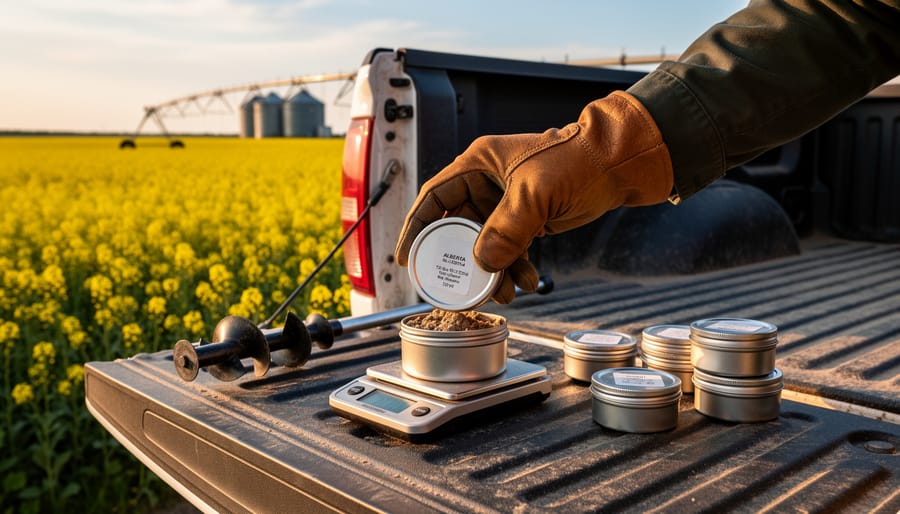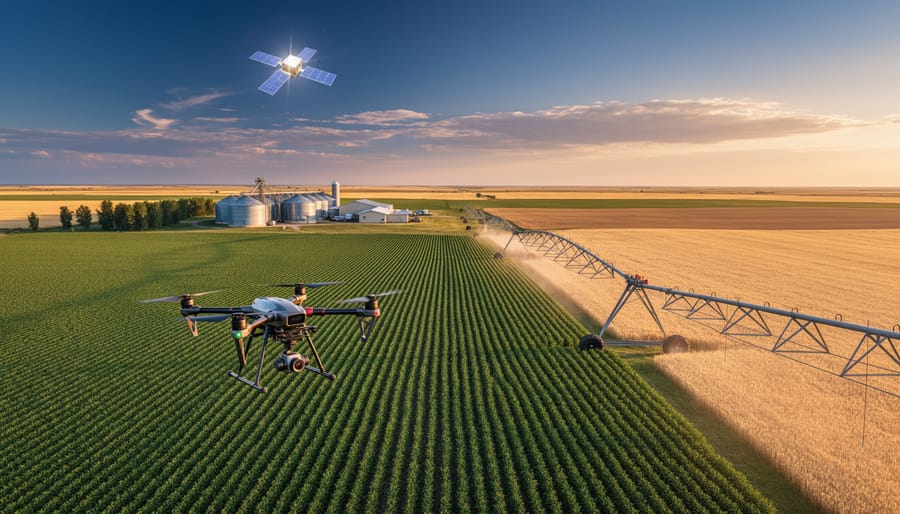What is Source Water and Why Protect It?
Surface Water Sources
Surface water sources like rivers, lakes, and reservoirs are vital components of the hydrologic cycle and provide essential water for communities across Canada. These bodies of water are replenished by precipitation, surface runoff, and groundwater discharge. However, they are also vulnerable to pollution from various sources, including agricultural runoff, urban development, and industrial activities. The Source Water Collaborative works to protect these precious resources by promoting sustainable land use practices, such as bioinfiltration, which help to filter pollutants and maintain water quality. By engaging with stakeholders at the local level, the collaborative aims to develop tailored solutions that balance the needs of communities, agriculture, and the environment. Safeguarding our surface water sources not only ensures a reliable supply of clean drinking water but also preserves the ecological integrity of these vital ecosystems for future generations.

Groundwater Sources
Groundwater sources, such as aquifers and wells, play a crucial role in providing clean drinking water for many communities. Aquifers are underground layers of permeable rock, sand, or gravel that hold and transmit groundwater. These natural reservoirs are recharged by precipitation and surface water infiltration. Wells tap into aquifers, allowing access to this valuable resource.
The Source Water Collaborative works diligently to safeguard these groundwater sources from contamination. By partnering with local stakeholders, the collaborative promotes best practices in land use planning, wellhead protection, and proper well maintenance. Efforts include identifying potential contamination risks, implementing protective measures, and educating well owners on responsible stewardship.
Through proactive groundwater management, the collaborative ensures the long-term sustainability and quality of these vital sources. By preserving the integrity of aquifers and wells, communities can rely on a safe and dependable supply of drinking water for generations to come.

Threats to Source Water
Source water faces numerous threats that can compromise its quality and safety. Agricultural activities are a significant concern, as runoff from fields treated with pesticides, herbicides, and fertilizers can contaminate nearby water sources. Improper agricultural water management practices, such as over-irrigation or poor drainage, can exacerbate these issues. Industrial facilities also pose risks through accidental spills, leaks, or improper disposal of chemicals and waste materials. Urban areas contribute to source water degradation through stormwater runoff, which can carry pollutants like oil, grease, heavy metals, and bacteria from streets and parking lots into water bodies. Aging or inadequate wastewater treatment infrastructure can lead to the release of insufficiently treated sewage. Additionally, climate change-induced extreme weather events, such as heavy rainfall or droughts, can amplify these threats by increasing runoff or concentrating pollutants. The cumulative impact of these diverse threats underscores the importance of comprehensive source water protection efforts that engage all stakeholders, from farmers to industry leaders and urban planners, in preserving this vital resource for our communities.
The Source Water Collaborative Approach

Multi-Stakeholder Partnerships
The Source Water Collaborative brings together diverse partners from various sectors to safeguard our shared drinking water sources. By engaging stakeholders such as farmers, ranchers, foresters, energy companies, conservation groups, and local governments, the Collaborative finds common ground and leverages resources for maximum impact.
Through open dialogue and collaboration, the Collaborative identifies win-win solutions that protect water quality while supporting economic vitality. For example, the Collaborative works with agricultural partners to promote best management practices like cover cropping and precision nutrient application, which reduce runoff and protect downstream water supplies.
The Collaborative also partners with industry to advance responsible development practices and with local communities to support source water protection planning. By building trust and fostering cooperation, the Collaborative helps stakeholders overcome barriers and achieve shared goals.
Success stories from across Canada showcase the power of multi-stakeholder partnerships. In Alberta, a collaboration between farmers, municipalities, and conservation groups has protected critical source water areas while enhancing agricultural productivity. By working together, we can ensure clean, safe drinking water for generations to come.
Community-Based Planning
The Source Water Collaborative plays a vital role in helping communities across Canada develop tailored source water protection plans. By working closely with local stakeholders, the Collaborative ensures that each plan addresses the unique challenges and opportunities present in the community. This collaborative approach empowers farmers, landowners, and other key players to take an active role in safeguarding their drinking water sources.
Through workshops, training sessions, and one-on-one consultations, the Collaborative equips communities with the knowledge and tools they need to create effective protection strategies. These sessions cover topics such as identifying potential contamination risks, implementing best management practices, and monitoring water quality. By sharing success stories and lessons learned from other communities, the Collaborative inspires and motivates participants to take action.
The Collaborative also connects communities with funding opportunities and technical assistance to support the implementation of their protection plans. This includes grants for projects like riparian buffer plantings, well decommissioning, and septic system upgrades. By leveraging these resources, communities can turn their plans into tangible actions that make a real difference in protecting their water sources.
Throughout the planning process, the Collaborative emphasizes the importance of ongoing community engagement and education. By fostering a sense of shared responsibility and stewardship, the Collaborative helps ensure that source water protection remains a top priority for years to come.
Education and Outreach
The Source Water Collaborative actively engages in education and outreach initiatives to raise awareness about the importance of protecting our drinking water sources. Through workshops, webinars, and community events, the Collaborative empowers local stakeholders, including farmers, municipalities, and watershed groups, to take action in preventing water pollution and safeguarding our shared water resources. By providing educational resources, sharing best practices, and facilitating knowledge exchange, the Collaborative helps communities understand the critical role they play in ensuring clean, safe drinking water for generations to come. These efforts foster a sense of shared responsibility and inspire collaborative solutions to protect our most precious resource.
Success Stories and Impact
The Source Water Collaborative has facilitated numerous successful protection efforts across North America. In Alberta, the Collaborative worked with local farmers, ranchers, and municipalities to implement sustainable soil and water conservation practices. Through erosion control measures, riparian area restoration, and improved nutrient management, these initiatives reduced sediment and pollutant runoff into nearby water sources by an average of 35%.
Another notable project involved partnering with Indigenous communities in British Columbia to safeguard traditional water sources. By combining traditional ecological knowledge with modern conservation techniques, the Collaborative helped establish protected areas around vital springs and streams. Water quality testing revealed a 50% decrease in contaminants within just two years.
In Ontario, the Collaborative spearheaded a multi-stakeholder effort to address agricultural runoff affecting municipal water supplies. Working closely with farmers, conservation authorities, and local government, they developed a comprehensive source water protection plan. This included implementing cover crops, constructing wetlands, and optimizing fertilizer application. As a result, nitrate levels in affected wells dropped by 30%, ensuring safer drinking water for over 50,000 residents.
These success stories demonstrate the tangible impact of the Source Water Collaborative’s work. By bringing together diverse stakeholders and employing proven conservation strategies, they have consistently achieved measurable improvements in water quality and quantity. As the Collaborative continues to expand its reach, it aims to replicate these successes in more communities, ensuring clean, reliable drinking water for generations to come.
How to Get Involved
The Source Water Collaborative welcomes individuals and organizations passionate about protecting drinking water at its source to get involved in various ways. One key avenue is through partnerships – the Collaborative brings together diverse stakeholders including water utilities, government agencies, conservation groups, and agricultural associations. Reach out to explore opportunities to collaborate on projects, share resources, or align efforts for greater impact.
Volunteering is another valuable way to contribute. The Collaborative hosts events, workshops and clean-up initiatives where extra hands are always appreciated. Lend your skills in areas like community outreach, water quality monitoring, or educational program delivery. Advocacy is also vital – let your local representatives know that source water protection is a priority and support policies and funding that enable this critical work.
Stay informed about current initiatives and opportunities by signing up for the Source Water Collaborative newsletter. Follow and amplify their message on social media to raise awareness in your networks. Finally, consider supporting the Collaborative’s efforts through donations. Every contribution helps advance the mission of safeguarding the lakes, rivers and aquifers we rely on for clean drinking water. By working together, we can ensure a sustainable water future for our communities.
Conclusion
The Source Water Collaborative plays a vital role in safeguarding our drinking water supplies across North America. By bringing together diverse stakeholders and fostering collaborative solutions, the organization helps protect the lakes, rivers, and aquifers we depend on. However, the work is far from finished. As our population grows and pressures on water resources intensify, ongoing vigilance and proactive measures are essential. Each of us has a part to play in supporting the Collaborative’s mission. Whether you’re a farmer adopting sustainable practices, a community member volunteering for clean-up efforts, or an individual making conscious choices to reduce pollution, your actions make a difference. Together, we can ensure clean, safe drinking water for generations to come. Join the Source Water Collaborative today and be part of the solution.











